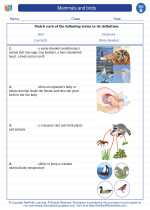Roots
Roots are an essential part of a plant's structure and function. They serve multiple purposes, including anchoring the plant in the soil, absorbing water and nutrients, and storing food reserves. Let's explore the fascinating world of roots!
Types of Roots
There are two main types of roots: taproots and fibrous roots. Taproots have a main central root that grows vertically downward, while fibrous roots consist of thin, branching roots that spread out in all directions. Both types play a vital role in the overall health and survival of the plant.
Functions of Roots
- Anchorage: Roots anchor the plant in the soil, providing stability and support.
- Water and Nutrient Absorption: Root hairs, located on the surface of the roots, are responsible for absorbing water and nutrients from the soil.
- Food Storage: Some plants store food reserves in their roots, such as carrots and beets, serving as a valuable energy source.
- Aeration: Roots also help to aerate the soil by creating passageways for air and water to move through.
Root Structure
A typical root has several distinct regions, including the root cap, meristematic region, elongation zone, and maturation zone. Each region plays a specific role in the growth and development of the root system.
Study Guide
- Define the term "root" and explain its importance to plants.
- Compare and contrast taproots and fibrous roots, providing examples of plants that have each type.
- List and describe the functions of roots in plants.
- Draw and label the structure of a root, including the root cap, meristematic region, elongation zone, and maturation zone.
- Observe different types of roots in plants around your home or school. Take note of their characteristics and how they contribute to the overall health of the plant.
Understanding the role of roots in plants is crucial for appreciating the complexity of the natural world. Take time to explore and observe the fascinating world beneath the surface!
[Roots] Related Worksheets and Study Guides:
.◂Science Worksheets and Study Guides Second Grade. Mammals and birds
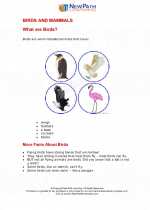
 Activity Lesson
Activity Lesson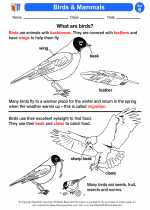
 Worksheet/Answer key
Worksheet/Answer key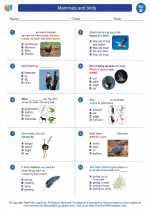
 Worksheet/Answer key
Worksheet/Answer key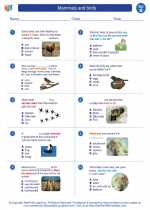
 Worksheet/Answer key
Worksheet/Answer key
 Worksheet/Answer key
Worksheet/Answer key
 Vocabulary/Answer key
Vocabulary/Answer key